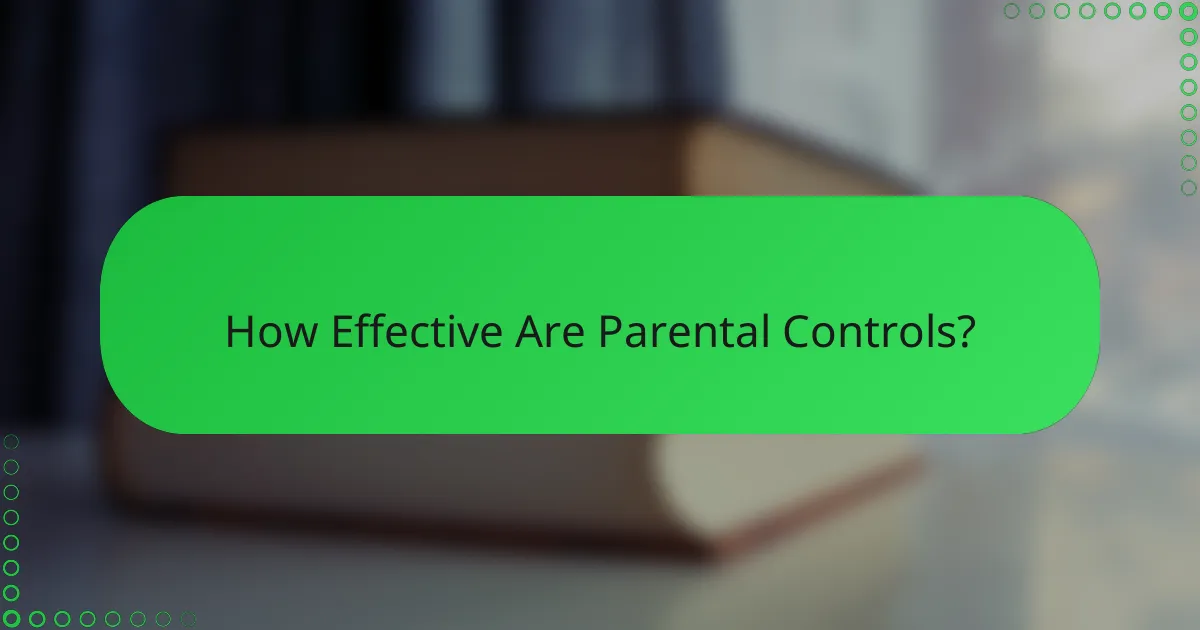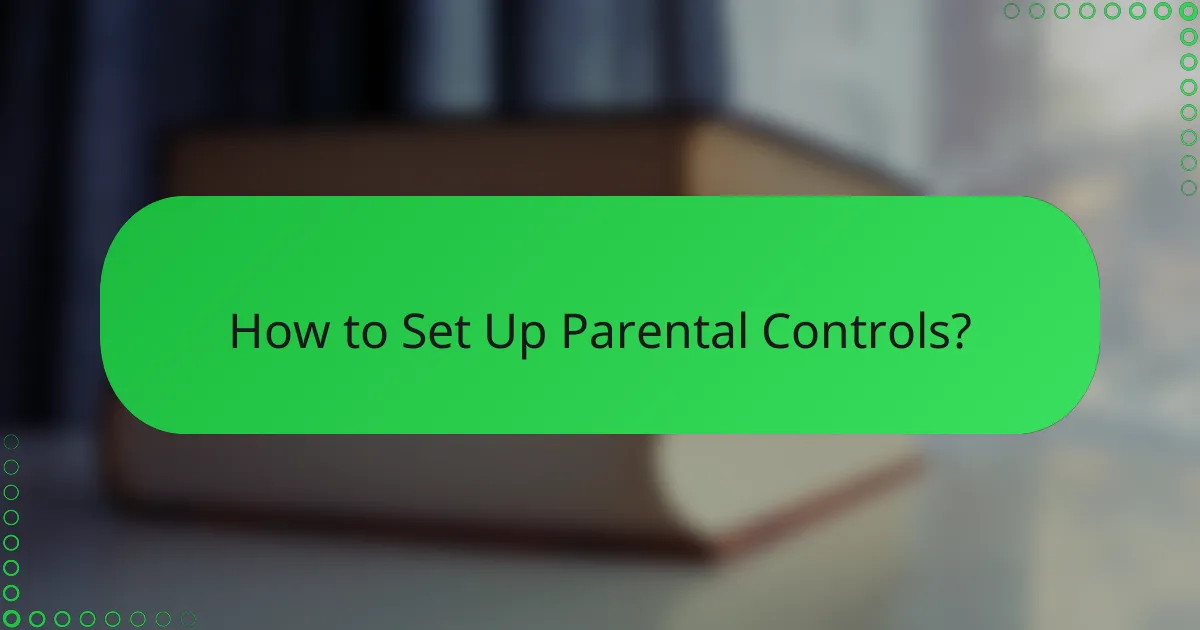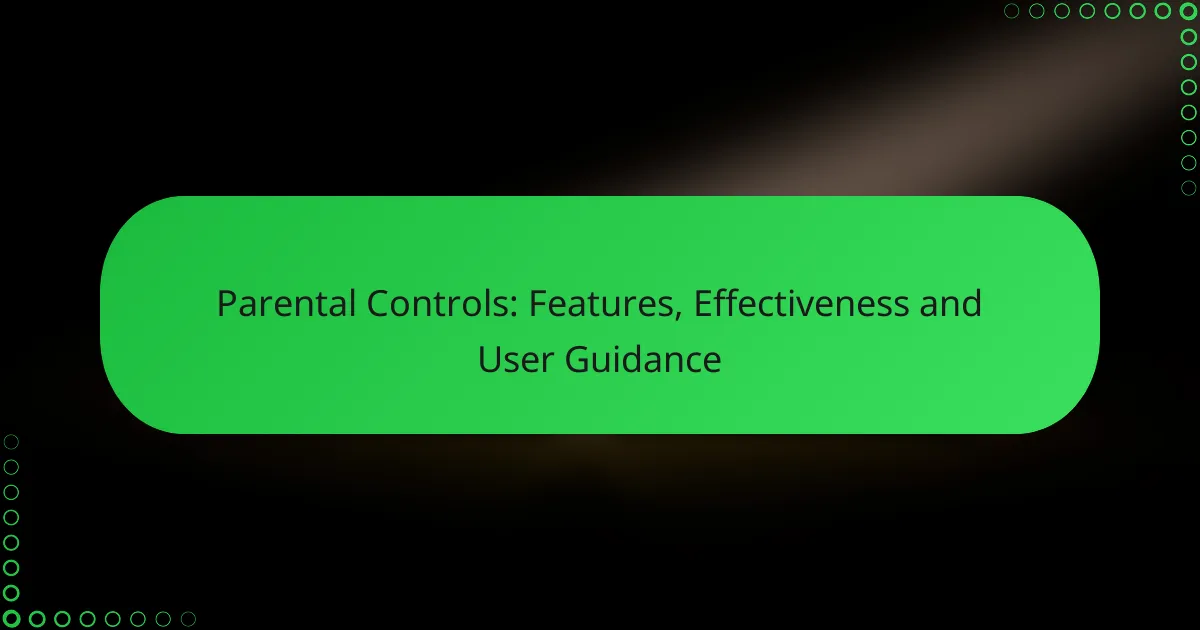Parental controls are essential tools that enable parents to oversee and manage their children’s online activities, fostering a safer digital environment. Key features such as content filtering, screen time management, and activity monitoring play a crucial role in their effectiveness. For those interested in enhancing their children’s safety in the digital realm, exploring Cloud Gaming Security and Privacy can provide valuable insights. However, successful implementation requires consistent oversight and guidance from parents.

What Are the Best Parental Control Tools?
The best parental control tools help parents manage their children’s online activities, ensuring a safer digital environment. Key features to look for include content filtering, screen time management, and activity monitoring.
Norton Family
Norton Family offers comprehensive monitoring and management features for families. It allows parents to track their children’s online activities, set time limits, and block inappropriate content across various devices.
This tool is user-friendly and provides detailed reports on children’s internet usage. It supports multiple platforms, including Windows, Android, and iOS, making it versatile for families with different devices.
Net Nanny
Net Nanny is known for its real-time internet filtering and monitoring capabilities. It helps parents block harmful websites and provides alerts for potentially risky online behavior.
With features like screen time management and app blocking, Net Nanny allows parents to customize their approach to online safety. It works on various devices, including smartphones and tablets, ensuring comprehensive coverage.
Qustodio
Qustodio provides robust parental controls with a focus on user-friendly design. It offers features like web filtering, time management, and social media monitoring.
This tool allows parents to set specific rules for each child, making it adaptable to different age groups. Qustodio is compatible with multiple platforms, including Windows, Mac, Android, and iOS.
Circle Home Plus
Circle Home Plus is a device that pairs with your home Wi-Fi network to manage all connected devices. It allows parents to set time limits, pause internet access, and filter content for every device in the household.
With its easy-to-use app, parents can monitor usage and adjust settings remotely. This device is particularly useful for families looking to manage screen time across various devices without installing software on each one.
Google Family Link
Google Family Link is a free tool that helps parents manage their children’s Android devices. It allows parents to set screen time limits, approve or block apps, and track device location.
This tool is especially beneficial for families already using Google services. It integrates seamlessly with Google accounts, making it easy to manage settings and monitor activities from a single app.

How Effective Are Parental Controls?
Parental controls can be quite effective in managing children’s online behavior, but their success largely depends on proper implementation and consistent monitoring. These tools help limit screen time, monitor online activities, and block inappropriate content, providing a framework for safer internet use.
Impact on Screen Time
Parental controls significantly influence screen time by allowing parents to set limits on device usage. Many applications offer features to schedule usage times, helping to establish healthy habits. For instance, parents can restrict access to devices during homework hours or bedtime, promoting better sleep and focus.
When implementing screen time limits, consider age-appropriate guidelines. For younger children, daily screen time should generally be under one hour, while older children may have slightly more flexibility. Regularly reviewing and adjusting these limits can help maintain balance as children grow.
Monitoring Online Activity
Monitoring online activity is a key feature of parental controls, enabling parents to track their children’s internet usage and interactions. Most tools provide detailed reports on visited websites, app usage, and even social media interactions. This transparency helps parents engage in conversations about online safety and responsible behavior.
To effectively monitor online activity, choose parental control software that offers real-time alerts for suspicious behavior. Additionally, maintain an open dialogue with children about why monitoring is necessary, fostering trust while ensuring their safety online.
Blocking Inappropriate Content
Blocking inappropriate content is another critical function of parental controls, helping to filter out harmful websites and materials. Most systems use predefined categories to restrict access to adult content, violence, and other unsuitable topics. Parents can customize these settings based on their child’s age and maturity level.
When setting up content filters, regularly review and update the blocked categories to adapt to changing online trends. Encourage children to report any inappropriate content they encounter, reinforcing the importance of safe internet practices.

What Features Should You Look For?
When selecting parental controls, focus on features that effectively manage content access, screen time, location tracking, and social media interactions. These functionalities help ensure a safer online environment for children while allowing parents to maintain oversight.
Content Filtering
Content filtering allows parents to block inappropriate websites and applications based on categories such as adult content, violence, or gambling. Look for solutions that offer customizable filters, enabling you to tailor restrictions according to your child’s age and maturity level.
Many parental control tools provide pre-set categories, but the best options allow you to add specific sites to a blacklist or whitelist. Regularly review and update these settings to adapt to your child’s changing interests and online behavior.
Time Management
Time management features help parents set limits on how long children can use devices or specific applications. This can include daily usage limits or scheduled “off” times, which encourage healthy screen time habits.
Consider tools that offer flexible scheduling options, such as allowing more screen time on weekends or during holidays. Be mindful of the potential for children to find ways around these limits, so regular discussions about screen time expectations are essential.
Location Tracking
Location tracking enables parents to monitor their child’s whereabouts through GPS technology. This feature is particularly useful for ensuring safety when children are out alone or with friends.
Choose a parental control app that provides real-time location updates and geofencing capabilities, which send alerts when a child enters or leaves designated areas. Always communicate with your child about the importance of this feature for their safety to foster trust.
Social Media Monitoring
Social media monitoring allows parents to oversee their child’s interactions on platforms like Facebook, Instagram, and Snapchat. This feature can help identify potential risks, such as cyberbullying or inappropriate content sharing.
Look for tools that provide insights into your child’s social media activity without invading their privacy. Encourage open conversations about online behavior and the importance of maintaining a positive digital footprint.

How to Set Up Parental Controls?
Setting up parental controls involves selecting the right tools, installing them, and customizing their settings to fit your family’s needs. This process helps manage what content children can access and how they interact with devices.
Step 1: Choose a Tool
Start by selecting a parental control tool that suits your requirements. Options range from built-in device settings on smartphones and tablets to dedicated software applications and internet service provider features.
Consider factors such as compatibility with your devices, ease of use, and the specific features offered, such as web filtering, screen time management, and activity monitoring. Popular tools include Qustodio, Norton Family, and Google Family Link.
Step 2: Install and Configure
Once you’ve chosen a tool, follow the installation instructions provided by the software or device manufacturer. For apps, download from official app stores, while built-in features can typically be accessed through device settings.
During configuration, create user profiles for each child, ensuring you set appropriate age restrictions and content filters. This step is crucial for tailoring the controls to each child’s maturity level and needs.
Step 3: Customize Settings
After installation, customize the settings to align with your family’s values and rules. Adjust features such as time limits, content restrictions, and monitoring options based on your child’s age and behavior.
Regularly review and update these settings as your child grows or as their needs change. It’s also beneficial to have open discussions with your children about the reasons behind these controls to foster understanding and cooperation.

What Are the Challenges of Using Parental Controls?
Parental controls can help manage children’s online activities, but they come with several challenges that may limit their effectiveness. Understanding these challenges is crucial for parents to make informed decisions about their use.
Over-reliance on Technology
Many parents may depend too heavily on parental controls, believing they provide complete protection. While these tools can restrict access to inappropriate content, they cannot replace active parental involvement and open communication about online safety.
It’s essential to balance technology with guidance. Regular discussions about internet use and setting expectations can enhance the effectiveness of parental controls.
Potential for Evasion
Children may find ways to bypass parental controls, such as using VPNs or alternative browsers. This potential for evasion highlights the need for parents to stay informed about the latest technologies and methods that children might use to circumvent restrictions.
To mitigate this, parents should regularly review the settings of parental control software and engage in conversations with their children about the reasons for these restrictions.
Privacy Concerns
Implementing parental controls can raise privacy issues, especially if they involve monitoring online activities. Parents must consider the balance between safeguarding their children and respecting their privacy.
To address these concerns, parents should be transparent about what data is being collected and why. Establishing trust can lead to more effective use of parental controls without infringing on a child’s sense of autonomy.

How Do Parental Controls Vary by Device?
Parental controls differ significantly across devices, including smartphones, tablets, computers, and gaming consoles. Each platform offers unique features and settings tailored to its specific environment and user experience.
Smartphones and Tablets
On smartphones and tablets, parental controls typically allow parents to restrict app downloads, set screen time limits, and filter content. For instance, both iOS and Android devices provide built-in settings to manage app access and screen time, enabling parents to customize restrictions based on their child’s age and maturity.
When using these controls, it’s essential to regularly review and adjust settings as children grow. For example, a child may need more freedom as they demonstrate responsibility, while younger children may require stricter limits. Always check for updates, as manufacturers frequently enhance these features.
Computers
Parental controls on computers often include web filtering, activity monitoring, and time management tools. Windows and macOS both offer integrated parental control options that allow parents to block specific websites, monitor usage, and set time limits on computer access.
Consider using third-party software for more advanced features, such as detailed reporting and remote management. However, be mindful of privacy concerns and ensure that any software complies with local regulations regarding data protection.
Gaming Consoles
Gaming consoles provide parental controls that can restrict game access based on age ratings, manage online interactions, and set spending limits on in-game purchases. Platforms like PlayStation, Xbox, and Nintendo Switch have user-friendly interfaces for parents to adjust these settings easily.
It’s advisable to engage with children about these controls, explaining the reasons behind restrictions. This dialogue can foster understanding and cooperation, making it easier to enforce rules while allowing for some flexibility as trust builds.
